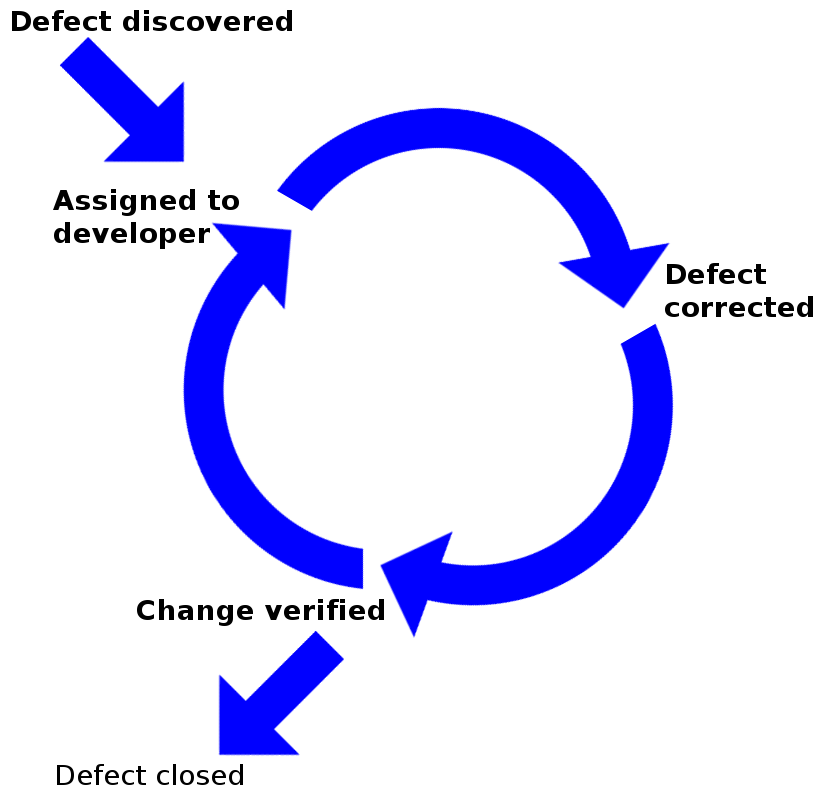As development progresses we inevitably run into functionality gaps that are either deemed as enhancements.
These issues often get captured by QA in the bug tracker and assigned to a developer that will be unable to resolve the issue.
Assigning issues to the wrong people will cause the defect to bounce around like a hot potato and waste everyone's time.
Enhancements are a requirements defect that can not be resolved by either QA or the developer.
The life cycle of a defect and the life-cycle of a enhancement are two entirely different things. A defect is a difference between a stated requirement and the code. If there is no documentation then there is no code defect (see It's not a bug, it's...).
Most enhancements will eventually be coded by some developer; they just should not be managed from the bug tracker. They need to go through the requirements process to determine whether or not the change will be made. Even when changes are made they can be very different from what QA or the developer expects.
This is the correct way to manage a defect.
This is the incorrect way to manage enhancements. When QA discovers functionality not covered by the requirements then we have an issue; however, it is unlikely that it will be resolved by a developer.
Therefore assigning enhancements to developers is simply going to waste time because neither QA nor developer should be deciding requirements.
If the requirements are correct and the test plans are defective then it should be logged as a test defect. This is tricky because QA often controls the bug tracker and may not log errors that they commit. This is typically reported in QA with a functions as designed status.
At a minimum, the implementation of requirements and test defects in the bug tracker can do several positive things for you:
The percentages break down as follows:
At a minimum, these defect categories should help reduce the amount of fire-fighting at the end of a project..
See also:
These issues often get captured by QA in the bug tracker and assigned to a developer that will be unable to resolve the issue.
Assigning issues to the wrong people will cause the defect to bounce around like a hot potato and waste everyone's time.
Enhancements are a requirements defect that can not be resolved by either QA or the developer.
The life cycle of a defect and the life-cycle of a enhancement are two entirely different things. A defect is a difference between a stated requirement and the code. If there is no documentation then there is no code defect (see It's not a bug, it's...).
Most enhancements will eventually be coded by some developer; they just should not be managed from the bug tracker. They need to go through the requirements process to determine whether or not the change will be made. Even when changes are made they can be very different from what QA or the developer expects.
Defect Life-cycle
The defect life-cycle is well known:- Defect is identified as a departure from the requirements
- Defect is assigned to a developer
- Defect is corrected
- Correct is verified
- If not corrected re-open and re-assign to developer
- The defect is closed
This is the correct way to manage a defect.
This is the incorrect way to manage enhancements. When QA discovers functionality not covered by the requirements then we have an issue; however, it is unlikely that it will be resolved by a developer.
Therefore assigning enhancements to developers is simply going to waste time because neither QA nor developer should be deciding requirements.
Non-Code Defect Life-cycle
There are defects that are not coding defects, this includes:- Insufficient requirements
- Correct requirements but incorrect test plans
If the requirements are correct and the test plans are defective then it should be logged as a test defect. This is tricky because QA often controls the bug tracker and may not log errors that they commit. This is typically reported in QA with a functions as designed status.
At a minimum, the implementation of requirements and test defects in the bug tracker can do several positive things for you:
- It removes the responsibility to find a solution from development.
- It makes it clear how many defects are in the requirements or test plans.
- It reduces stress; no developer wants to be blamed for an issue that is not his.
- Many enhancements call for updated project plans and pushing back the deadline.
Put Responsibility Where it Belongs
The creation of requirements and test defects in the bug tracker goes a long way to cleaning up the bug tracker. In fact, requirements and test defects represent about 1 out of 4 of defects in most systems.The percentages break down as follows:
- Requirements defects: 9.58%
- Testing defects: 15.42%
At a minimum, these defect categories should help reduce the amount of fire-fighting at the end of a project..
See also:














